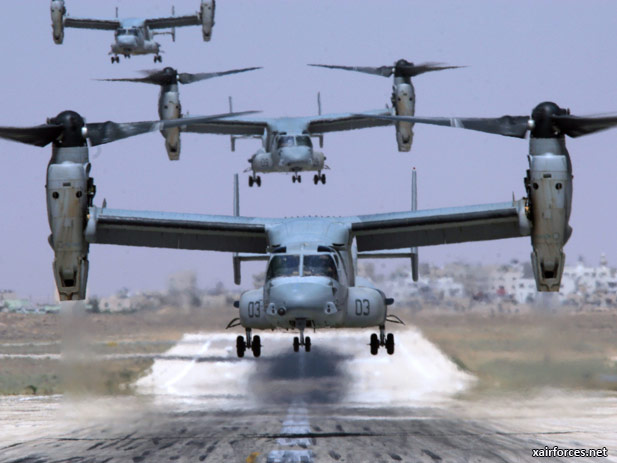
Are Bad Metrics Understating MV-22 Capabilities?

Misleading Metrics Understate Readiness and Versatility of MV-22 Tilt-Rotor.
Over the last five years, the MV-22 Osprey tilt-rotor aircraft has demonstrated its operational value in 17 foreign deployments while becoming the safest rotorcraft in the Marine Corps fleet. The aircraft has performed raids in Iraq, disaster relief in Haiti, casualty evacuation in Jordan, counter-insurgency operations in Afghanistan and combat rescue in Libya.
Operational commanders are clamoring for more of the unique airframes because, in the words of one Marine briefing, it flies "twice as fast, carrying three times the payload, at four times the range of the legacy helicopter it replaces."
You'd think that after 140,000 safe flight hours, often in harrowing circumstances, critics would begin recognizing that the MV-22 is everything the Marines promised it would be -- agile, versatile, reliable and affordable. Well, no such luck. Even though transition from the ancient CH-46 helicopter to the MV-22 is now more than 50 percent complete, some so-called experts continue to spout misleading information about the aircraft's price and performance. They say the Osprey costs too much to build and operate, and has not demonstrated adequate levels of readiness in combat operations.
No doubt about it, $68 million is a lot of money to pay for the production version of a rotorcraft. However, the performance characteristics of the Osprey make it the operational equivalent of two or three conventional helicopters. The CH-46 that the MV-22 is replacing can carry 12 troops to a combat radius of 75 nautical miles (nm.) at a top speed of 145 nm. per hour. The MV-22, in contrast, can carry 24 troops to a combat radius of 325 nautical miles at a top speed of 260 nm. per hour. The range differential alone is a huge force multiplier. For instance, a CH-46 stationed in Baghdad can't even make it to the Iraqi border and back without refueling, whereas an MV-22 stationed at the same base can reach the Persian Gulf, the Mediterranean Sea or the Caspian Sea -- and then turn around and fly back without refueling.
The contrast in performance underscores why picking any airframe other than Osprey for combat search-and-rescue is irresponsible (as the Air Force should have learned when MV-22s rescued a stranded U.S. fighter crew in Libya during the recent conflict there). But it takes time for people to appreciate the full potential of a revolutionary airframe, so it is no surprise that as Canada puts together its own solicitation for a new combat search-and-rescue helicopter, it is making the same mistakes the U.S. Air Force did -- applying dated metrics and assumptions that favor a solution sure to leave some personnel stranded forever in hostile territory. The simple fact is that any solution other than a tilt-rotor can't fly far enough or fast enough to save some endangered warfighters.
In that regard, the critics are doing warfighters a real disservice by citing misleading comparisons between Osprey and various conventional helicopters. For instance, they complain it costs about $10,000 per flight hour to operate the MV-22 compared with about $3,000 per flight hour for the MH-60, the Marine helicopter most closely resembling what the Air Force uses for combat search-and-rescue. However, this ignores the superior speed, range and carrying capacity of the MV-22. When the metric is changed to cost per mile flown, the MV-22 only looks about 60 percent more expensive, and when the metric is passenger seat miles, the MV-22 looks twice as efficient ($1.53 versus $3.21). After all, it can carry three times more people than an MH-60, which like its greater speed and range might come in handy in some rescue operations.
It is also worth noting that the MV-22's computerized reporting system depresses apparent readiness rates compared with the older, manual system used for the legacy CH-46s it will replace. The Osprey actually has high mission-capable rates, but the way the new system measures availability makes it look less ready than it really is. Eventually these matters will all be sorted out, and it will be obvious the MV-22 is far, far superior to a conventional rotorcraft in just about any imaginable scenario. That's why even the Army, which has no formal plans to buy tilt-rotors, is taking a close look at its medical-evacuation potential. Let's just hope the rest of the world wakes up to the revolutionary potential of tilt-rotor technology while there is still time to leverage economies of scale off of a warm production line.
Source: 06 March 2012 - © Lexington Institute News
Photo: US MV-22 Ospreys at Amman (Photo by unkar.org)
(6.03.2012)
|